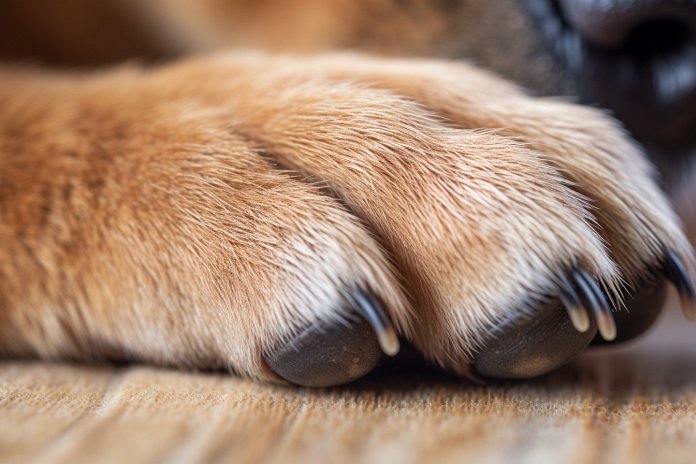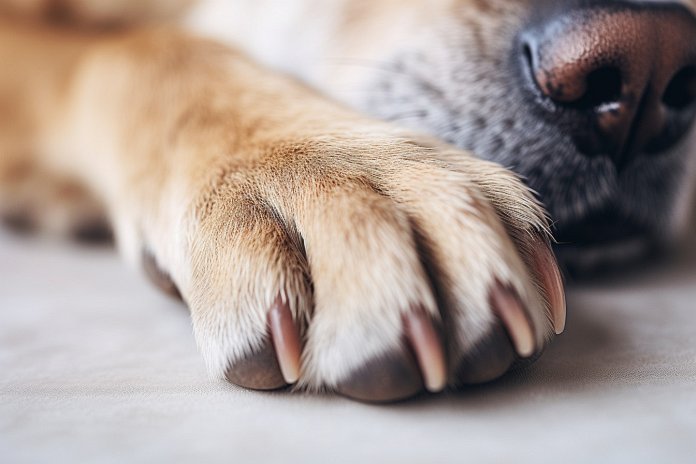
Trimming your dog’s nails is necessary for maintaining their hygiene and preventing pain. Recognizing the signs of nail pain can help you address the issue before it becomes worse. Signs of nail pain include long nails, whimpering or whining, fixation on a particular nail, and changes in behavior. Some dogs may become withdrawn while others may be more vocal about their pain.
Body Language
Other signs of nail pain include hesitance to step on a hurting paw, grooming or licking sore nails, appearing lethargic, reacting aggressively to unwanted touches, swelling or redness around the nail, and abnormal nail color.
The History of Dogs’ Nails Causing Pain
The understanding of dogs experiencing nail pain dates back to the establishment of the first veterinary schools. Veterinary practices began developing in the late 18th century, with the first veterinary school founded in France in 1791. Veterinary medicine spread to other countries, including England and North America. The development of veterinary practices showcased a worldwide concern for animals’ well-being, including dogs.
The Science of Dogs’ Nails Causing Pain
Common causes of nail disorders in dogs include bacteria, fungus, or infections. A dog’s nails consist of the living pink quick and the hard outer shell. If a dog’s nail is damaged, it will cause them pain. Cutting nails too short can result in bleeding and discomfort, similar to the pain humans feel when cutting nails too short. Dogs also have sensory receptors in their nails, and if those receptors are damaged, they will feel pain. Long nails can cause dogs to lose traction and damage tendons, leading to deformities.
Training Your Dog to Not React to Nail Pain
Training methods such as positive reinforcement can help dogs ignore their pain and prevent it from worsening. Rewarding good behavior and using clear commands can discourage dogs from touching their nails. Conditioning and training are necessary for consistent behavior.
If your dog continues to irritate their painful nails, using a cone can temporarily prevent further damage until professional medical advice is sought.
Reacting to Severe Nail Pain
If your dog’s nail pain persists or worsens, it is important to seek immediate medical assistance. If you are unable to move your dog, contact your veterinary clinic for advice.
“Remember, your furry friend’s nails are more than just a fashion statement – they’re a vital part of their overall health and comfort. Regular maintenance and understanding their pain signals can save you both from a lot of distress down the line.”

Tips & Things to Know
1️⃣ Look out for signs of nail pain in your dog such as long nails, whining, fixation on a particular nail, changes in behavior, reluctance to step on a hurting paw, grooming or licking sore nails, lethargy, aggression, swelling or redness around the nail, and abnormal nail color.
2️⃣ Nail disorders in dogs can be caused by bacteria, fungus, or infections as well as damaged nails. If your dog’s nail pain persists or worsens, it’s imperative to seek professional medical advice.
3️⃣ To help your dog manage nail pain, employ positive reinforcement and clear commands. Reward good behavior and use conditioning for consistency. If your dog continues to irritate their painful nails, a cone can be used to prevent further damage until professional help is sought.
Frequently Asked Questions, Answered ✅
1. How can I recognize if my dog is experiencing nail pain?
– Some signs of nail pain include long nails, whimpering or whining, fixation on a particular nail, changes in behavior, hesitance to step on a hurting paw, grooming or licking sore nails, appearing lethargic, reacting aggressively to unwanted touches, swelling or redness around the nail, and abnormal nail color.
2. What are the common causes of nail disorders in dogs?
– Common causes of nail disorders in dogs include bacteria, fungus, or infections. Damaged nails can also cause pain and discomfort, similar to humans cutting their nails too short.
3. How can I train my dog to not react to nail pain?
– Training methods such as positive reinforcement and clear commands can help dogs ignore their pain and prevent it from worsening. Rewarding good behavior and conditioning are also important for consistent behavior.
4. What should I do if my dog continues to irritate their painful nails?
– Using a cone can temporarily prevent further damage until professional medical advice is sought. It is important to seek immediate medical assistance if the nail pain persists or worsens.
5. When should I contact my veterinary clinic for advice?
– If you are unable to move your dog or if the nail pain persists or worsens, it is important to contact your veterinary clinic for advice. They will be able to provide guidance on next steps and potential medical assistance.